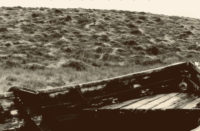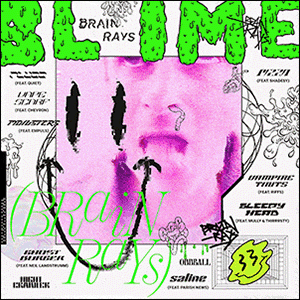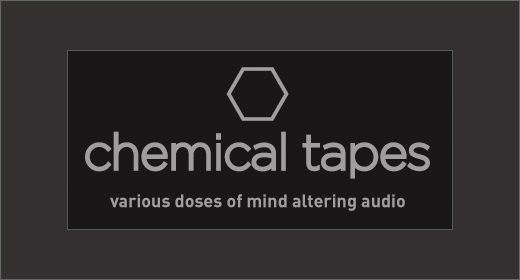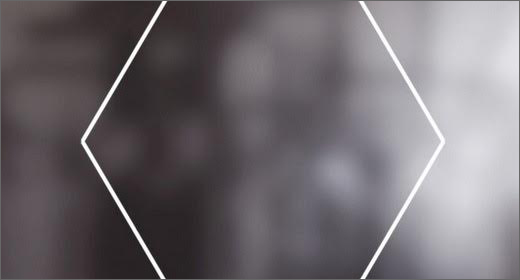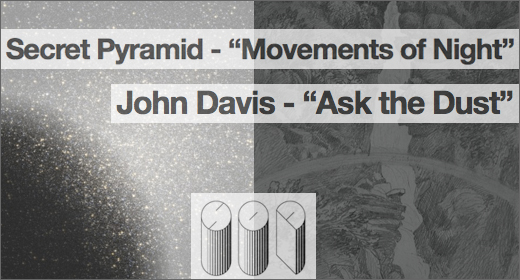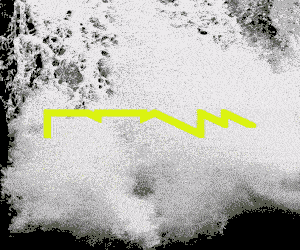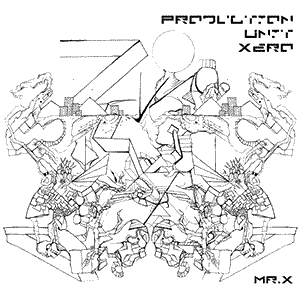 The new wave of cassette underground, for all its freeform and fertile energy, sometimes seems to have spawned a twilight world crawling with a mass of audio-doodlers straining at the self-consciously weirded-out end of a sonic continuum loosely identifiable as ‘lo-fi experimental.’ Outcomes often resemble, if not the ramblings of a madman, then the flotsam of a bad drug-addled mind. Among the cassette peddlers not seduced by this unsalubrious muse is Chemical Tapes. Chemical Rob (Gibson) evidently prefers a somewhat more refined sonic narcosis, hosting musicians like Tim Martin, moonlighting here as Atlantis from his day job, Maps & Diagrams (whose Red Moon Rising inaugurated the label) and Jimmy Billingham, who, as Tidal (when not being Venn Rain), has been an ardent tape trafficker and proponent of its special properties. The essence of tape, its very materiality as a medium, seeps into the message—a happy—making hiss and saturated bliss that adds a certain depth and resonance, making it a conducive carrier for drone-based ambient and Kosmische music in particular, as this double dose of Chemicals displays.
The new wave of cassette underground, for all its freeform and fertile energy, sometimes seems to have spawned a twilight world crawling with a mass of audio-doodlers straining at the self-consciously weirded-out end of a sonic continuum loosely identifiable as ‘lo-fi experimental.’ Outcomes often resemble, if not the ramblings of a madman, then the flotsam of a bad drug-addled mind. Among the cassette peddlers not seduced by this unsalubrious muse is Chemical Tapes. Chemical Rob (Gibson) evidently prefers a somewhat more refined sonic narcosis, hosting musicians like Tim Martin, moonlighting here as Atlantis from his day job, Maps & Diagrams (whose Red Moon Rising inaugurated the label) and Jimmy Billingham, who, as Tidal (when not being Venn Rain), has been an ardent tape trafficker and proponent of its special properties. The essence of tape, its very materiality as a medium, seeps into the message—a happy—making hiss and saturated bliss that adds a certain depth and resonance, making it a conducive carrier for drone-based ambient and Kosmische music in particular, as this double dose of Chemicals displays.
:: :: ::
[Release page] Tape’s appeal resides partly in the legacy of the many formative music listening experiences pre-digital citizens had through the medium, as Tidal man Billingham points here. Beyond mere indulgence of the knee-jerk nostalgia of popular postmodern obsession, though, is a connection to the act of capture, documented sound bled into by its document—the epiphenomena of compromised fidelity, embrace of saturation, hiss, wow and flutter (Dolby? What Dolby?). Tidal has spooled out his oneiric creed in a slew of cassettes—on Digitalis, Sacred Phrases, Tranquility Tapes, Sangoplasmo, Hobo Cult, and Rotifer, to name but six, many lately made available (whisper it quietly) digitally. His latest, Olympus, models the soaring expansive nature of the eponymous mountain peak with four tracts of psychoactive synth shimmer variously suffused with tape-mediated warmth. Seen through a cassette plastic glass darkly, opening shot, “Phoenix Follower,” heaves itself up between glistening sea mist and washed out horizons imbued with the warped and woozy detunes and turquoise hexagon sunlight of 90s electronica. It extends through the luminous occlusions of “Spectral Alliance,” furthering the murk on “Serpentine,” wavering and warbling its way through an irradiated glaze, progressively twisted, as if being chewed up by a half-broken old player. Finally, the etiolated oceanism surrounding Olympus reaches its peak with the harmonically-deviant drone churn of “Golden Oriole,” by now so degraded the listener is driven deep within to retrieve the glstening syrup of signal from darkening pitch. There’s a hint of Basinskian disintegrationism playing about Billingham’s concept: “Like the fundamentals of life, it’s physical and it won’t last forever. A quiet, yearning, buried, foggy sense of nostalgia and resigned, contented acceptance,” he reflects. Be that as it may, Olympus peeks through the clouds of nostalgia in picturesque faded glory, more harmony in ultraviolet than fade to grey.
:: :: ::
[Release page] Tim Martin’s latest findings come out of The Institute of Technology, operating under even heavier influence of Kosmische treatment than on debut Chemical Tape, Maps & Diagrams’ Red Moon Rising, with his Atlantis project. Even more one-eyed in its retro-futurist vision, it’s two parts interstellar overdrive to one part voyage to the bottom of the sea). What you get is a varispeed float aboard a vessel, sometime submarine, of queasy aquatica and astral diversions, teeming with blip and whoosh, twinkle, flutter and fizz, drone and analog bubblebath. As with Maps & Diagrams, titles are not afterthought add-ons, but allusive journeying suggestions: a world of wonder of old back covers of stories for boys and sci-fi dreams invoked by the likes of “Wanderings in the Western Land,” “Columbus in the New World,” or “A Strange Voyage.” These last two’s polaroid-in-motion syncopations and wibbling arpeggiations are characteristic of a particular mid-90s space-obsessed chillout room ambient strand channeled by Atlantis. Other strands include more percussive bleep-scapes like “Under the Rays of Aurora Borealis” and “A Love Song,” or the sub-Emeraldian cosmo-motorik of “Old Town Folk.” The set cycles from more composed undersea shanties to recursive loop doodle—the slow-rolling drone-swathes of “The Otto Cycle” rubbing up against the woozy AE-BoC-channeling synth-smear sketch of “Heidi’s Further Adventures,” surface haze and gauze rippled by eddies and currents of oblique kinesis through fluid opacity. For those smitten by the man from Atlantis, there’s more Outer Limits tape-tangle and synth-spangle to be found: The Lost Island, The Day the Music Died, Particles, and House of Tomorrow.
Both releases are available on Chemical Tapes.







